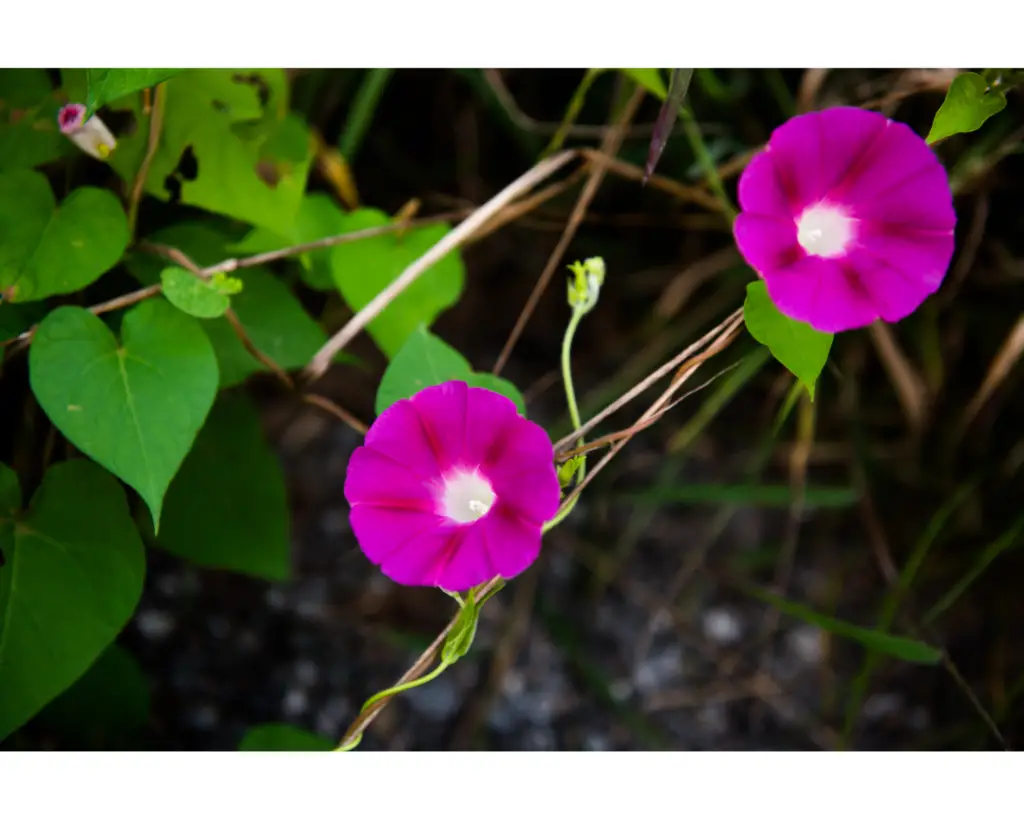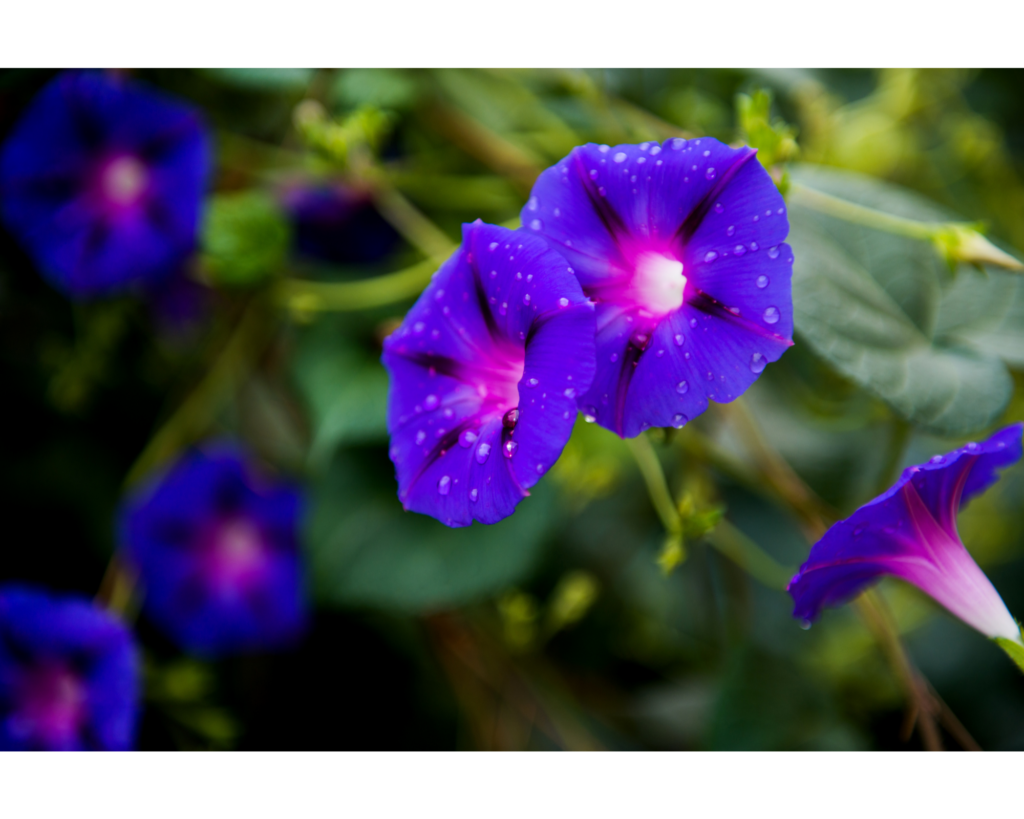Indoor gardening has gained immense popularity in recent years, with plant enthusiasts seeking ways to bring nature’s beauty into their homes. While many plants thrive outdoors, there are several species that can be successfully grown indoors, and morning glory plants are among them. Known for their vibrant and eye-catching flowers, morning glories can be a stunning addition to any indoor garden or living space.
This article will guide you through the process of growing morning glory plants indoors. We will discuss the ideal growing conditions, suitable containers, proper care and maintenance, propagation techniques, and common challenges faced by indoor gardeners. By following these tips and recommendations, you can enjoy the beauty of morning glories throughout the year, right in the comfort of your home.


Table of Contents
Understanding Morning Glory Plants
Morning glory plants (Ipomoea spp.) belong to the Convolvulaceae family and encompass various species, including Ipomoea purpurea, Ipomoea tricolour, and Ipomoea nil. They are fast-growing annual or perennial vines that produce stunning flowers in a wide array of colours, including shades of blue, purple, pink, and white. Morning glories are known for their trumpet-shaped blossoms, which often open in the early morning and close later in the day.
Choosing the Right Variety
Before diving into the specifics of growing morning glories indoors, it is essential to select the right variety for indoor cultivation. Some morning glory cultivars are better suited for indoor conditions than others. Consider choosing compact or dwarf varieties, such as ‘Heavenly Blue’ or ‘Pearly Gates,’ which are more suitable for container growth and limited spaces. These varieties generally have a more controlled growth habit, making them easier to manage indoors.
Ideal Growing Conditions
Morning glory plants require certain environmental conditions to thrive indoors. Here are some key factors to consider:
- Light: Morning glories are sun-loving plants. Place them in a location that receives at least six to eight hours of direct sunlight each day. South-facing windows are typically the best choice. If natural light is limited, consider using artificial grow lights to supplement the lighting requirements.
- Temperature: Morning glories prefer warm temperatures between 60-80°F (15-27°C). Avoid exposing them to cold drafts or sudden temperature fluctuations, as they are sensitive to extreme changes.
- Soil: Well-draining soil is crucial for morning glory plants. Use a high-quality potting mix enriched with organic matter, such as compost or aged manure. The soil pH should be slightly acidic to neutral, around 6.0-7.0.
- Watering: Water morning glories thoroughly whenever the top inch (2.5 centimetres) of soil feels dry. Avoid overwatering, as it can lead to root rot. Ensure proper drainage in the containers to prevent waterlogging.
- Humidity: Morning glories prefer moderate humidity levels. If the indoor air is dry, increase humidity by placing a tray filled with water near the plants or using a humidifier.
Container Selection and Planting
Selecting the right containers for your morning glory plants is crucial for their growth and development. Choose containers that are at least 12 inches (30 cm) deep and have sufficient drainage holes. This will help prevent waterlogging and ensure healthy root growth.
When planting morning glory seeds or seedlings, follow these steps:
- Soak the seeds: Before planting, soak the morning glory seeds in warm water overnight. This process helps to soften the seed coat, facilitating germination.
- Sowing seeds: Fill the containers with moist potting soil, leaving about an inch of space from the top. Plant the seeds about half an inch deep, spacing them according to the package instructions. Gently cover the seeds with soil and water lightly.
- Transplanting seedlings: If using seedlings, carefully transplant them into the containers, ensuring not to disturb the roots. Plant them at the same depth they were in their previous pots and water gently.

Care and Maintenance
Proper care and maintenance are essential for the healthy growth of morning glory plants indoors. Here are some guidelines to follow:
- Watering: Maintain consistent soil moisture levels by watering when the top inch of soil feels dry. Avoid overwatering or allowing the soil to become excessively dry. Consistency is key to prevent stress on the plants.
- Fertilisation: Feed your morning glories with a balanced, water-soluble fertiliser every two to three weeks during the growing season. Dilute the fertiliser according to the package instructions to prevent burning the plants.
- Pruning and Training: Morning glories are vigorous climbers. To prevent them from becoming too unruly indoors, provide support such as trellises, stakes, or strings for the plants to climb. Regularly pinch back the growing tips to encourage bushier growth and more flowers.
- Deadheading: Remove spent flowers regularly to promote continuous blooming and prevent the formation of seed pods. This process redirects the plant’s energy into producing more flowers.
- Pest and Disease Management: Monitor your plants for common indoor pests like aphids, spider mites, or whiteflies. Treat any infestations promptly using organic insecticidal soaps or horticultural oils. Ensure good air circulation around the plants to prevent fungal diseases, such as powdery mildew.
Propagation
Morning glories can be propagated through both seeds and cuttings. Seeds are the most common method of propagation. To collect seeds, allow the flowers to fade and the seed pods to dry on the vine. Harvest the pods before they burst open, and store them in a cool, dry place for future planting.
To propagate from cuttings, take stem cuttings from healthy, mature plants. Remove the lower leaves and dip the cut end in a rooting hormone. Plant the cuttings in a well-draining potting mix and provide the appropriate conditions for rooting.
Common Challenges and Troubleshooting
Indoor gardening can come with its share of challenges. Here are some common issues faced when growing morning glory plants indoors and their potential solutions:
- Insufficient Light: If your morning glories are not blooming or appear leggy, it could be due to inadequate light. Consider moving them to a brighter location or supplementing with artificial grow lights.
- Pests and Diseases: As mentioned earlier, pests like aphids or spider mites can affect morning glories indoors. Regularly inspect the plants, and if necessary, treat them with appropriate organic pest control methods.
- Overwatering: Morning glories are susceptible to root rot if overwatered. Ensure proper drainage and allow the soil to dry out between watering sessions.
- Lack of Blooming: If your morning glories are not producing flowers, it could be due to various factors, such as insufficient light, inadequate fertilisation, or improper pruning. Evaluate these factors and make the necessary adjustments.
Conclusion
Growing morning glory plants indoors can be a rewarding experience. With their captivating flowers and vigorous growth, morning glories bring a touch of natural beauty to any indoor garden. By providing the right growing conditions, suitable containers, and proper care, you can successfully cultivate.
